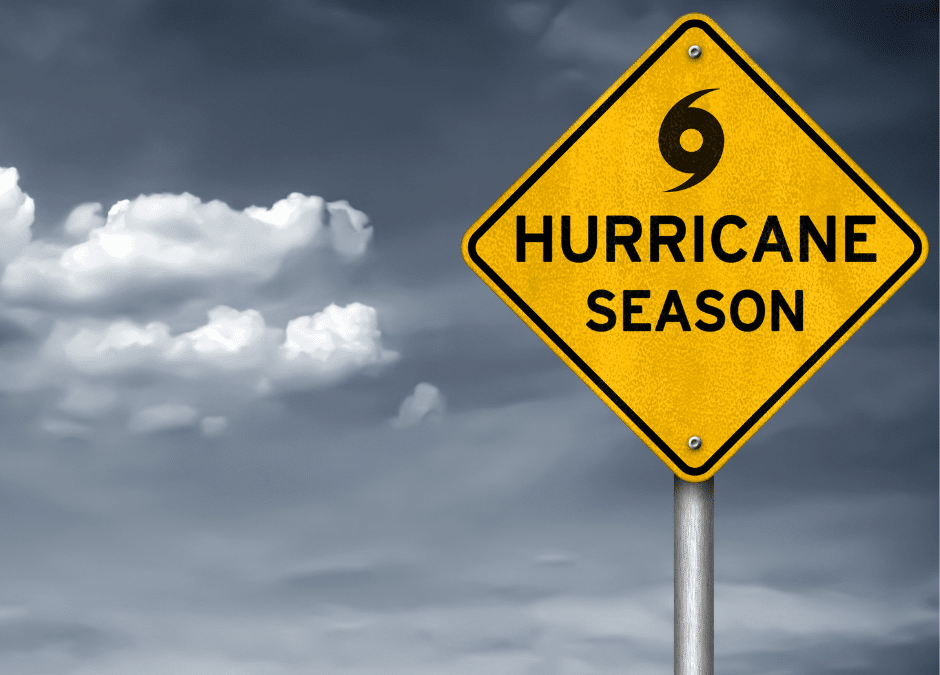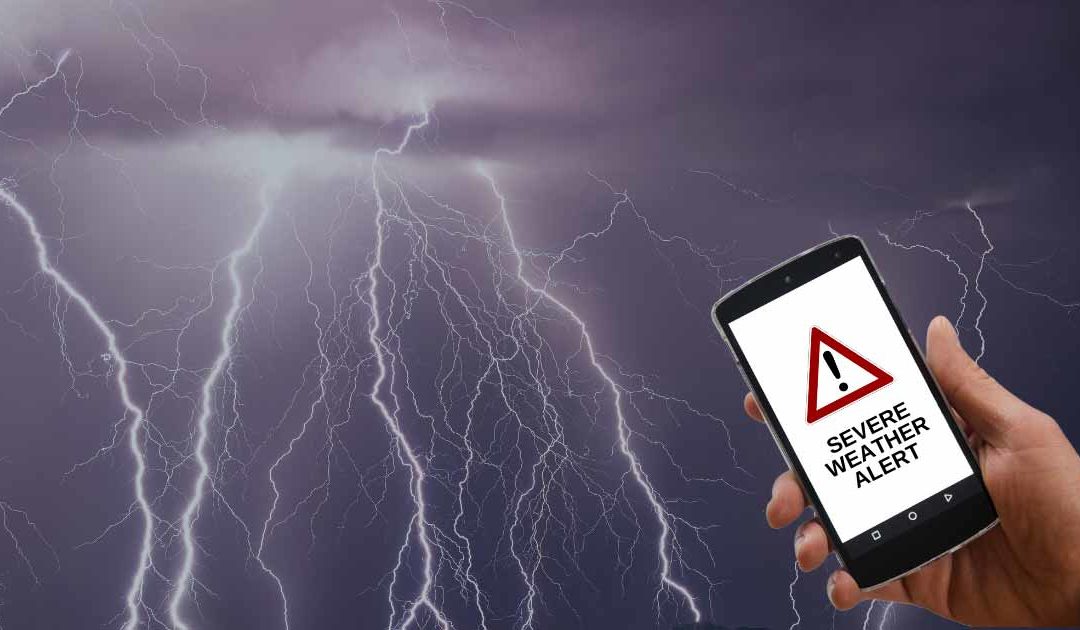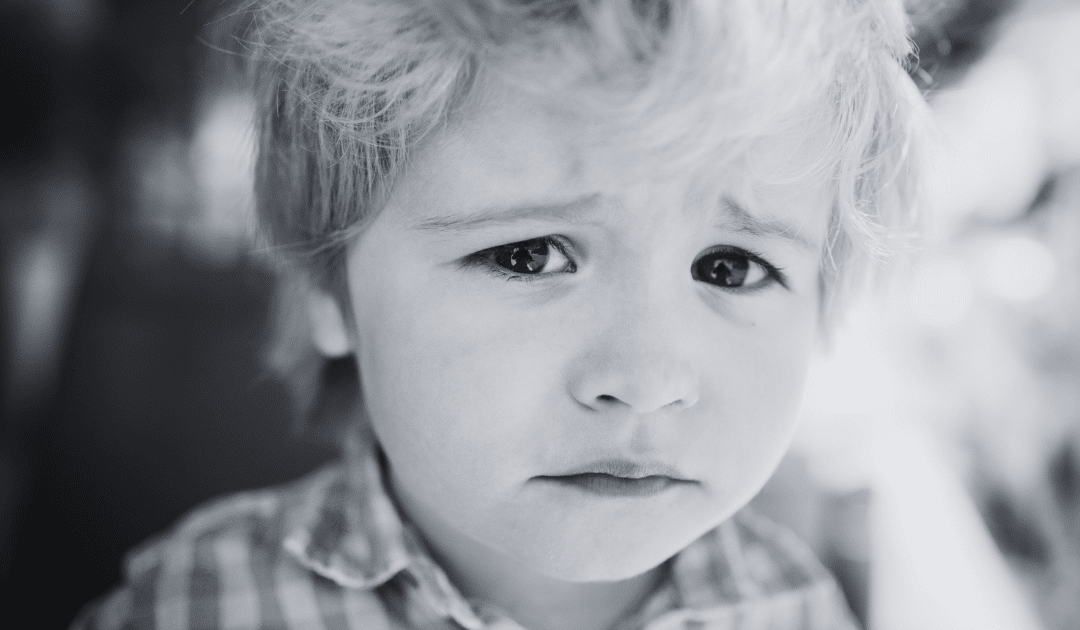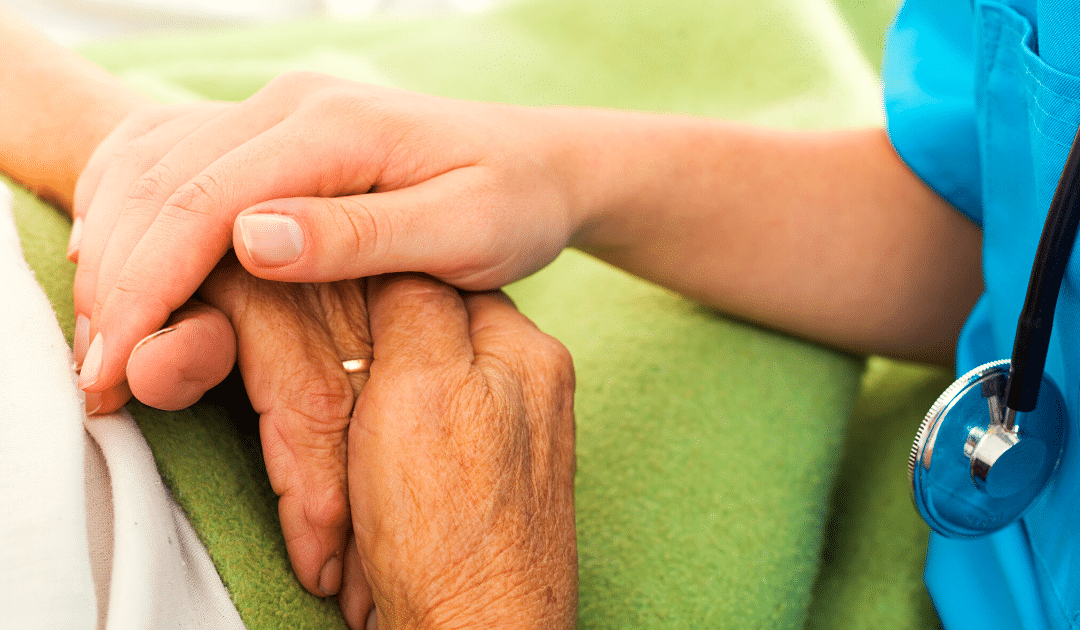
by California Casualty | Homeowners Insurance Info, Safety |
Hurricanes are natural disasters that bring demolishing winds and massive amounts of rainfall to land from the ocean. Coastal towns and cities across the world have been torn apart by hurricanes, but they aren’t the only ones who are usually affected. Hurricanes can cause significant damage to towns over 100 miles inland! September, is the most active month of the year, so now is the time to protect yourself and your family from these deadly natural disasters.
The relative lack of storms so far this hurricane season is bringing both good and bad news. While we are all taking a sigh of relief that there has yet to be a major storm, it could also be bringing a false sense of security. Many people in states where hurricanes usually hit may be “dropping their guard.” A new survey finds only a quarter of those living in hurricane-prone states think they are prepared if a monster storm hits, and nearly half of the respondents say they have yet to make any preparations this year.
Remember all hurricanes, no matter what size, have the potential to cause significant damage and life-threatening situations. Looking back at the destruction previous hurricanes like Harvey, Sandy, and Katrina have caused, it is essential that you make sure your family, home, and belongings are completely protected.
Important Hurricane Coverages:
- Flood Insurance. A regular home insurance policy will not pay for damages caused by flooding, but when you add flood insurance to your policy it will cover all damages that happen to your property, even if you rent! Be aware that when you add flood insurance there is a 30-day waiting period until it goes into effect, so that means it is often too late to purchase it when a hurricane or tropical storm is approaching.
- Scheduled Personal Property Insurance (Floater). Many people find that after a natural disaster their insurance coverage is limited on expensive personal items (ex. jewelry, furniture, technology, firearms, collectibles, furs, instruments, etc.). Floaters protect your personal items for their full value.
Steps to Protect Your Home & Family
- Heed evacuation notices and keep your car’s gas tank full in case of evacuations
- Stock up on essentials like bottled water, non-perishable food items, toilet paper, and pet food
- Make sure pets are kept inside, safe, and have a spot to do their “business”
- Have a family evacuation and communication plan
- Prepare an emergency kit (ex. flashlight, medicines, cash, and important documents)
- Get a NOAA Weather Radio
- Sign up for National Weather Service storm texts at https://www.weather.gov/subscribe-hurricaneinfo
- Charge cell phones and other devices and have charged spare batteries
- Install storm shutters or purchase 5/8 exterior grade or marine plywood to cover windows or doors
- Add straps or additional clips to roofs to reduce damage
- Bring in or secure anything that can be propelled by wind (ex. grills, bicycles, lawn furniture, play equipment, etc.)
- Know how to turn off propane tanks and gas lines
After a Hurricane Strikes
- Make sure you, your family, and pets are safe and secure
- Register yourself as “safe” on the Safe and Well website
- Follow all city boil and curfew orders
- Secure the property from further damage or theft
- Contact your insurance company as soon as possible
- Keep or document receipts and other expenses if you are evacuated or forced to find another place to live because of damage to your home or apartment
- Be wary of unscrupulous contractors following a natural disaster
It’s important to know that flooding and storm surge are the biggest threats to life when hurricanes hit. Leave low-lying areas, never drive or cross through running water, and avoid rivers, streams, and creeks; which could flash-flood.
For more information visit:
https://www.ready.gov/hurricanes
https://mycalcas.com/?s=hurricane
https://www.iii.org/article/preparing-hurricane
https://www.cdc.gov/features/hurricanepreparedness/index.html
https://www.redcross.org/get-help/how-to-prepare-for-emergencies/types-of-emergencies/hurricane.html
This article is furnished by California Casualty, providing auto and home insurance to educators, law enforcement officers, firefighters and nurses. Get a quote at 1.866.704.8614 or www.calcas.com.

by California Casualty | Safety |
Many things in life come without warnings. But fortunately for us, severe weather isn’t one of them.
Meteorologists are constantly tracking dangerous storms and weather patterns. Tapping into their early warnings is key to protecting your home, your possessions, and your family. Here’s what you need to know to stay one step ahead of Mother Nature.
First, let’s take a look at severe weather.
There are many types of severe weather. Examples include thunderstorms, snowstorms, hail storms, blizzards, hurricanes, tornados, and cyclones. High winds and flooding associated with some of these weather events can do great damage to your home and belongings. Having a disaster plan is great, but knowing when disaster is going to strike is crucial. That’s where early warning systems come in.
Chances are you already have an emergency alert system.
The U.S. government has the capability to send wireless emergency alerts (WEAs) right to our cell phones. Agencies like the National Weather Service and FEMA are among the organizations that can do so. There is no signup required and you are not charged for the data used. Alerts come automatically with a special sound and vibration. Most phones are enabled for these alerts; to find out if your particular model is, check the WEA enabled list or contact your wireless carrier.
Check to see that your phone is enabled for alerts.
WEAs may be free but if your phone isn’t enabled to receive them, you won’t. Fortunately, it’s easy to activate this setting.
Apple (IOS) phones
-
- Go to settings, then notifications.
- Scroll down to government alerts.
- Slide the circle so that it is green for the alerts you want. For severe weather, you will want emergency alerts and public safety alerts.
Android phones
-
- Go to apps & notifications.
- Click on notifications.
- Turn on “allow alerts.”
- Make sure each alert that you want is enabled. For severe weather, you will want extreme threats, severe threats, public safety messages, and state and local tests.
While WEAs are good ways to get information, generally these alerts won’t arrive until there is an emergency. You may find value in getting advance notice.
Other ways to get emergency information:
If you do not have a WEA-capable phone, you can still get critical and timely information from NOAA Weather Radio, local media broadcasts, and the emergency alert system on your TV or desktop and mobile devices. Make sure to tune in if you suspect an impending weather emergency. In addition, your local utility company, township, city or state may offer free alerts. Check with your electric or gas company, and with city hall or municipal government. Find out how to sign up for their free alerts.
There’s an app for that, and it’s free.
You can get advance notice and more robust information by downloading a weather app on your smartphone or mobile device. Here are some popular free options.
-
- AccuWeather: Weather Alerts provides hourly forecasts, news, and updates as well as weather-tracking radar.
- AlertSense offers public safety alerts as well as severe weather warnings. You can set quiet hours so only emergency alerts are sent with sound.
- Emergency: Alerts is free from the American Red Cross. With this app, you can look up Red Cross shelters and alert loved ones you are safe. It also comes with a flashlight, a strobe light, an alarm, and preloaded content on everything from hurricanes to disasters that is accessible without an Internet connection
- FEMA offers real-time weather alerts from the National Weather Service for up to five locations of your choice. It also provides information on storm preparedness and filing a flood claim.
- Storm Shield is free with options for paid upgrades. This app provides alerts in text and voice and tracks conditions in up to 5 locations.
- WeatherBug is free with options to purchase in the app. It offers forecasts in real-time as well as weather maps, and more.
- The Weather Channel for Apple or Android offers live radar updates and local weather forecasts.
Stay one step ahead of Mother Nature with coverage from California Casualty.
No matter how well you prepare for severe weather, unfortunately, sometimes Mother Nature gets the upper hand. That’s why having the correct home insurance coverage is so important. Make sure you and your family are fully protected. For questions on home insurance or ways, you can save on your own insurance policy, call a California Casualty agent today at 1.866.704.8614 or visit our website www.calcas.com.
This article is furnished by California Casualty, providing auto and home insurance to educators, law enforcement officers, firefighters, and nurses. Get a quote at 1.866.704.8614 or www.calcas.com.

by California Casualty | Safety |
When the power goes out and the cell towers go down, do you have a plan? Do your kids and your ex know what that plan is?
Since disaster doesn’t just strike on alternate weekends, it’s important that you take into account both households when you’re a divorced parent. In honor of September, National Preparedness Month, we’ve compiled a list of everything you need to develop a customized plan in the event of a disaster.
Set aside past feelings and connect with your ex.
You fought over who got the widescreen TV; how are you possibly going to agree on where to go and what to do in a crisis? It’s time to set aside your differences and put your children, and safety, first. You will need to communicate during a disaster, and reaching out to prepare for one is a logical first step. Navigate your situation however it is most effective and set up that important first meeting or call to discuss the plan.
Consider your blended/mixed family’s specific needs.
The ages of your children will determine how much assistance they will need, and how much responsibility they may bear. If family members have medical needs, disabilities, or even special dietary restrictions, that has to be taken into account. Pets also need to be accommodated. List each member of your family—human and animal—and any specific needs they may have.
Determine the responsible party.
Children who are in school or daycare will need to be picked up in the event of a disaster. Pets may need to be secured or transported. Designate a responsible party to pick up children and one who will manage pets. It doesn’t have to be you or your ex, but it’s best to choose a trusted individual known to your family. Make sure that the individual is on the approved pick-up list at school or daycare, and has signed up for alerts. Also, make sure that your child knows who is allowed to pick him/her up.
Create an emergency communications plan.
The power may go out; the cell towers may be down. You may not have access to important information during a disaster. That’s why it’s important to create an In Case of Emergency (ICE) card.
-
- List contact information for each member of both families, caregivers, and any other individuals involved in the disaster plan. This includes work phone, home phone, and cell phone numbers.
- Choose an out-of-state contact to call in the event that your state’s phones and resources are down. That person can act as a main point of contact if you can’t reach each other.
- Starting at about age 5, children can learn a phone number. Teach your child one parent’s cell phone number. Try it as a song to the tune of “Twinkle, Twinkle Little Star.”
- Make sure your older children know your cell phone numbers, and don’t just press “mom” or “dad” on their phones.
- If cell phone service is down, advise your children to follow the guidance of trusted adults such as teachers, school administrators, and caregivers. Reassure them that you will be with them as soon as possible.
- Consider a prepaid phone card for use in an emergency.
Choose an emergency meeting place.
Depending upon the emergency, your home may not be the safest place to take shelter. If that is the case, you will want to choose a place in your neighborhood to meet. The local park, the school, the library, or your place of worship are all familiar and trusted options. If you are able to meet at home, make that the first choice—but be sure to determine whose home it is.
Pack a grab-and-go bag or emergency kit.
If you have to leave suddenly, there’s little time to pack. Having a grab-and-go bag or an emergency kit helps make sure you have everything you need. Pack a bag for every member of your family, including your pets. Include supplies for 3 days: a change of clothes, food, water, medications, hand sanitizer, blankets, etc. You will want a bag at each household, as you don’t know where the children will be when disaster strikes. Also, since children grow, and needs change, make sure you check your emergency kits every three months and update them as needed.
The type of disaster matters.
Severe weather is not the same as an earthquake or a fire. Have a plan for the different types of disasters that may affect your area. For example:
-
- In a hurricane, tornado, or high-wind storm, stay inside your home. Choose a small, interior room without windows, such as a bathroom or closet, on the first level.
- In a fire or evacuation, you may need to leave your home suddenly. If you need to meet, choose a spot in your neighborhood such as a playground, a big tree, or distinctive mailbox.
- In the event of an emergency, make sure the lines of communication are open between you and your ex. Have a plan in place to notify that the children are safe.
Practice, practice, practice.
Make an ICE card with the basics of the plan (including contacts) that can be kept in each adult’s wallet. Include a copy in your school-age child’s backpack. Then, schedule some time to practice the plan with your children. Practice different kinds of emergencies with each parent.
There’s an app for that.
There also are apps that you can use to prepare for an emergency. FEMA offers interactive checklists and emergency safety tips. The Red Cross provides apps specific to hurricanes, tornados, and earthquakes. Plus, the government has some great resources for disaster planning, including games kids can play to get ready.
This article is furnished by California Casualty, providing auto and home insurance to educators, law enforcement officers, firefighters, and nurses. Get a quote at 1.866.704.8614 or www.calcas.com.

by California Casualty | Nurses |
If a natural disaster strikes your community, what will you do?
As a nurse, your first instinct is to help. Whether you work at a school, a hospital, or clinic setting, your skillset is uniquely valued during a disaster. Here’s how you can help your patients cope after a natural disaster.
What types of natural disasters can you expect in your area?
Different parts of the U.S. are more prone to certain disasters than others, according to Popular Science. You’re more likely to experience wildfires in the western states and snowstorms in the Midwest and northeastern U.S. Tornadoes are common in south-central states while hurricanes often strike along the eastern seaboard. There are earthquakes in the west, and flooding happens pretty much everywhere. Not only do these disasters result in property damage, but they can also cause severe injury and even loss of life. Your nursing skills are much needed to minimize pain and suffering.
Why do nurses play key roles in a disaster?
As a nurse, you are a trusted professional. People look to you for guidance. You not only bring expertise in the medical field, you know how to coordinate care while helping to comfort patients, relieving some of their stress and fear.
In addition, disaster preparedness was likely part of your nursing training. If it wasn’t, or if you need a refresher, consider a disaster certification from the American Nurses Credentialing Center.
What are ways that nurses can help in a disaster?
Nurses play pivotal roles in a disaster, delivering onsite care to the injured. Often working amid chaos and with limited resources, nurses triage patients and administer medical care. If more serious care is needed, nurses help coordinate transport to the nearest hospital. Victims of disaster may experience post-traumatic shock syndrome, and nurses also monitor patients’ mental health and guide them to resources. In addition, nurses help displaced people find temporary shelter and food and get access to prescriptions as needed.
Helping in a disaster is not for everyone. There are potential safety and security threats. There are primitive conditions. There can be a significant time commitment away from your home and family. If you are able to clear your schedule to volunteer, consider the other attributes that will help make you successful in a disaster setting: (1) Your clinical expertise covers a wide range of medical conditions. (2) You are comfortable working in high-stress situations and can work through emotions. (3) You are able to work in rough conditions, perhaps without access to electricity, water and basic supplies. If you have the skills, the time, and the desire, disaster nursing could be right for you.
What is a school nurse’s special role following a disaster?
In addition to helping onsite following a disaster, we can’t forget about school nurses and the roles they play. They deal with the mental and physical effects among students, parents, teachers and staff. For families made homeless by the disaster, or those who need mental health services, a school nurse provides important connections to community resources. Similarly, she connects staff with district resources for mental and physical health.
How can you help your community prepare for a disaster?
You don’t necessarily have to volunteer in a disaster to help your community. You can be there to help prepare for a disaster in advance by assisting hospitals, schools, and towns in the creation of a comprehensive disaster plan.
Nurses can help with community education, leading disaster preparedness clinics, and giving people the knowledge to create their own disaster plans to make it safely through a disaster.
You can utilize resources from trusted organizations in developing the right program for your school, hospital, organization, and community. Consider these resources:
How can you volunteer to help in future disasters?
If you are interested in volunteering your time, make sure you have up-to-date vaccinations for traveling, and be prepared to leave immediately. The following organizations welcome disaster-related nurse volunteers:
This article is furnished by California Casualty, providing auto and home insurance to educators, law enforcement officers, firefighters, and nurses. Get a quote at 1.866.704.8614 or www.calcas.com.

by California Casualty | Firefighters, Peace Officers |
About an hour after the first plane struck the World Trade Center on the morning of September 11, 2001, Michael Wright found himself on the 81st floor of the North Tower, trapped in complete darkness and smoke. That’s when he heard the rumble: The South Tower was collapsing.
“I was lucky enough to be next to a first responder,” Wright said. “I can credit him for the fact that I am alive now.”
For John McLaughlin, rescuers found him the next morning, buried in the ruins of building two. “The last bits of rubble were cleared, and they were able to pull me out with nylon straps,” he said.
Survivor Wendy Lanski recalled how after the planes struck, “Police and firefighters and EMS workers were everywhere … [they] were coming up to us, grabbing us in groups, saying, ‘Go out this door, run across the street, cover your head, and don’t look up.’” As she and her colleagues rushed to escape the building, first responders were charging in, intent on saving lives.
Tragically, many of them never made it out. In all, 412 first responders – 343 firefighters, 24 law enforcement officers and 8 emergency medical personnel – were lost when the towers fell. With them, 2,565 people in and around the buildings.
Unprecedented
September 11, 2001, marks the deadliest terrorist attack in U.S. history, when four commercial planes were hijacked by members of al Qaeda and flown into buildings in New York City and Washington, D.C. The fourth was thwarted when passengers resisted, causing it to crash into a field in Pennsylvania instead of its intended target.
The attack left Americans reeling in shock, horror, and grief. In an instant, devastation rippled out across families, communities, and the nation.
In sharing that heartbreak and devastation, though, Americans came together. Within hours, an incomprehensible tragedy had galvanized a renewed spirit of national unity.
Much of that was sparked by the stories of courage and heroism that had emerged within minutes of the attack. Strangers risking their lives to run back into the towers to save others. Office workers staying behind for friends who were trapped or had disabilities.
And, of course, the hundreds of first responders – the warriors who rushed in to save lives, despite the overwhelming danger. Over the next days and weeks, countless stories like those of Wright, McLaughlin, and Lanski emerged, painting a profound story of the best of humanity.
Remembering the Fallen
Besides being the single deadliest attack in human history, 9/11 was also the single deadliest incident for firefighters and law enforcement officers in U.S. history.
As we take time on 9/11 to reflect on the national tragedy that occurred 20 years ago, we will remember the heroes who made the ultimate sacrifice that day. They were fire, EMS, and law enforcement personnel, but more importantly, they were husbands, fathers, wives, mothers, brothers, sisters, friends, and beloved colleagues.
How You Can Honor Them
Here are some ways you can honor our 9/11 heroes:
- Visit a memorial. There are memorials and monuments at or near the sites of the attacks, as well as across the country. The 9/11 Memorial & Museum also offers an online experience to learn more and pay tribute.
- Help 9/11 responders. Due to the chemicals and toxins released at the attack sites, many 9/11 first responders have since developed or died from illnesses such as cancer, respiratory diseases, and other chronic conditions. Support organizations that are directly helping responders who’ve fallen ill.
- Support your local first responders. By supporting your local heroes, you are giving thanks to all those who answer the call to serve and protect. Say yes to that next pledge or fundraising drive hosted by your community’s firefighter or police department.
If you are a first responder, you can:
- Join a 9/11 memorial stair climb. Every year, thousands meet up to climb the equivalent of 110 stories, the height of the World Trade Center towers. Normally held in office buildings, convention centers, and stadiums, this year the stair climb events are mostly virtual. Find one near you.
- Engage with your community. Although your job is serving others, doing so in your off hours – for causes close to your heart or in different areas of interest – will bring you closer to your community and first-responder network. Find a cause that could use your expertise or energy, or educate others about the EMS profession and inspire the next generation of first responders.
- Practice self-care. Learn to be aware of and manage your stress levels. Employ healthy coping mechanisms, take care of your mind and body, and be sure to reach out if you need to talk with someone or get support. Be there for your first responder family, many of whom are at increased risk of suicide.
Although we can’t erase the tragic events that took place 20 years ago, we can honor its fallen heroes by being kind and generous toward our neighbors and finding ways to serve in our communities.
This article is furnished by California Casualty, providing auto and home insurance to educators, law enforcement officers, firefighters, and nurses. Get a quote at 1.866.704.8614 or www.calcas.com.





